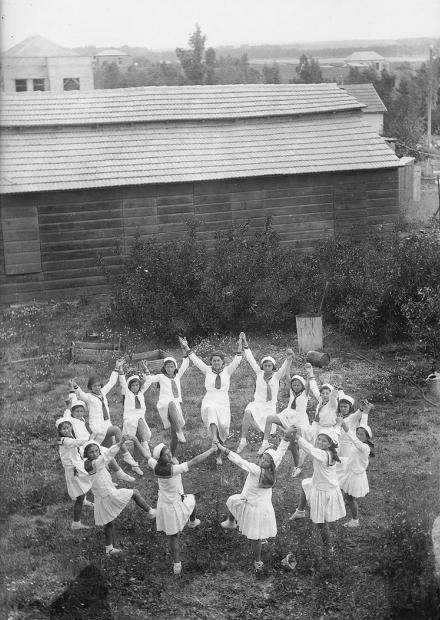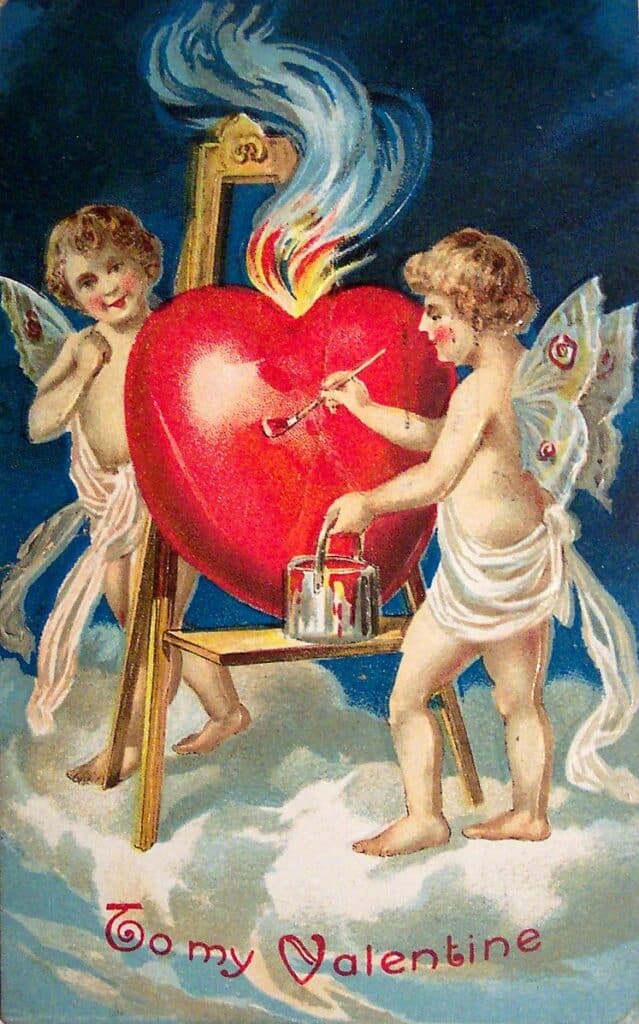
Did you know that Valentine’s Day isn’t the only day of love?
The 15th of the Hebrew month of Av (which takes place in the late summer) is Tu B’Av. In 2024, it begins at sunset on Sunday, August 18, and ends in the evening of Monday, August 19.
According to the Mishnah (Taanit 4:8), in the Second Temple period (586 BCE – 70 CE), Tu B’Av was an annual matchmaking day when unmarried women would dress in white and dance in the vineyards outside the walls of Jerusalem.
It was instituted on the 15th of Av (“Tu” represents the number 15 in Hebrew) to mark the beginning of the grape harvest.
On the surface, Valentine’s Day and Tu B’Av seem similar. Read about the Jewish debate over whether to celebrate Valentine’s Day.
In Israel, many couples exchange gifts or flowers and celebrate with a romantic dinner or a night out, just like on Valentine’s Day in the rest of the world (yes, Valentine’s Day is observed around the globe). Tu B’Av is also considered an auspicious day for weddings.
So, which one is more popular in Israel? According to a 2019 survey by the Jewish People Policy Institute, Jewish Israelis generally prefer to celebrate love on Tu B’Av as opposed to Valentine’s Day, but many observe both holidays.
To understand the difference between the two, you need to go back, way back, to around the 5th and 6th centuries B.C.E. Let’s explore the origin stories of the two days of love.
The Tu B’Av origin story
The ancient celebrations of Tu B’Av are described in the Mishnah (Taanit 4:8) where Rabban Shimon ben Gamliel is quoted as saying:
“There were no days as joyous for the Jewish people as the 15th of Av and Yom Kippur. On these days, the daughters of Jerusalem would go out in white clothes, which each woman borrowed from another…so as not to embarrass one who did not have her own white garments… The daughters of Jerusalem would go out and dance in the vineyards.”
The women would call out to the young men watching as they danced, saying: “Young man, please lift up your eyes and see what you choose for yourself for a wife! Do not set your eyes toward beauty, but set your eyes toward a good family.”
Side note: Judaism has a complicated attitude toward fashion and beauty. You can read more about it here.
In addition to the annual day of matchmaking, the 15th of Av was also associated with many happy events in ancient Jewish history that occurred on the day (Taanit 30b).

The rabbis of the Talmud contrasted Tu B’Av with Tisha B’Av — the saddest day of the Jewish year — when a number of tragic events are said to have befallen the Jewish people, including the destruction of the two Temples. When you think about it, it’s pretty crazy that the historically saddest and happiest days of the Jewish year are just six days apart.
After the destruction of the Second Temple, Tu B’Av was not really celebrated until it experienced a minor resurgence in the 19th century during the Haskalah (Jewish Enlightenment). Then in the 20th century, Jews in Europe and in British Mandate Palestine attempted to revive the ancient tradition.
The holiday didn’t gain much popularity, though, until the 1990s when it started to be embraced as the Jewish day of love or “Jewish Valentine’s Day.” Today on Tu B’Av, many Israelis give cards and flowers to their loved ones, and music performances and dance festivals are held to honor the day.
The Valentine’s Day origin story
As for Valentine’s Day, although no one knows its exact origins, many historians believe that it originated from Lupercalia, an ancient pagan festival that took place annually in Rome from February 13 to 15 starting around the 6th century BCE. The details of what happened at this annual “celebration” are troubling to say the least.
“The men sacrificed a goat and a dog, then whipped women with the hides of the animals they had just slain,” NPR editor Arnie Seipel wrote in his article on “The dark origins of Valentine’s Day.” Young women would reportedly line up for the men to hit them, believing that this would make them fertile.
This brutal ritual was followed by a matchmaking lottery in which the men drew the names of women from a jar. The couples would then be paired up for the remainder of the festival, and some of the couples ended up falling in love and getting married.

The festival evolved in 496 CE, when Pope Gelasius I declared Feburary 14 a day to commemorate the martyrdom of St. Valentine. He eliminated the pagan rituals, making the new festival “more of a theatrical interpretation” of Lupercalia, according to a historian interviewed by Seipel.
There are many legends surrounding the life of St. Valentine, who was a Christian living near Rome in the 3rd century CE. According to the History Channel, on one February 14, Valentine was imprisoned and executed “for assisting persecuted Christians and secretly marrying Christian couples in love.”
“As the story goes, during Valentine’s imprisonment, he tried converting [the Roman emperor Claudius II] to Christianity. Claudius became enraged and ordered Valentine to reject his faith or be killed. He refused to forsake his faith, so Valentine was beheaded,” the article adds.
This earned St. Valentine a reputation as a “patron of lovers,” but the day did not become definitively connected with love until many centuries later. In 1375, the English poet Geoffrey Chuacer wrote a poem associating the day with romantic love, helping to reinvent it. The first written Valentine’s greetings appeared in the early 1400s.

In approximately 1600, Shakespeare also helped solidify the current meaning of Valentine’s Day through the words of Ophelia in Hamlet: “To-morrow is Saint Valentine’s day, / All in the morning betime, / And I a maid at your window, / To be your Valentine.”
The custom of sending cards and flowers on Valentine’s Day spread worldwide starting in the late 20th century.
Conclusion
Tu B’Av and Valentine’s Day both have roots in ancient times. Today, they both celebrate love and are “observed” in similar ways. But the two holidays have completely different roots and come from different religious traditions. The origins of Valentine’s Day are darker than many people realize.
Although there has been a debate over whether Jews should celebrate Valentine’s Day, expressing love and gratitude all year round is certainly a Jewish value. The late Rabbi Jonathan Sacks put it this way:
“We don’t ask for wealth or fame, stardom or success. We don’t pray to be spared trials and tribulations. We just ask for life. That is what Judaism is: a life of love and a love of life. All the rest is commentary.” Read our 18 favorite Jewish quotes about love.
Originally Published Jul 28, 2023 09:08PM EDT


